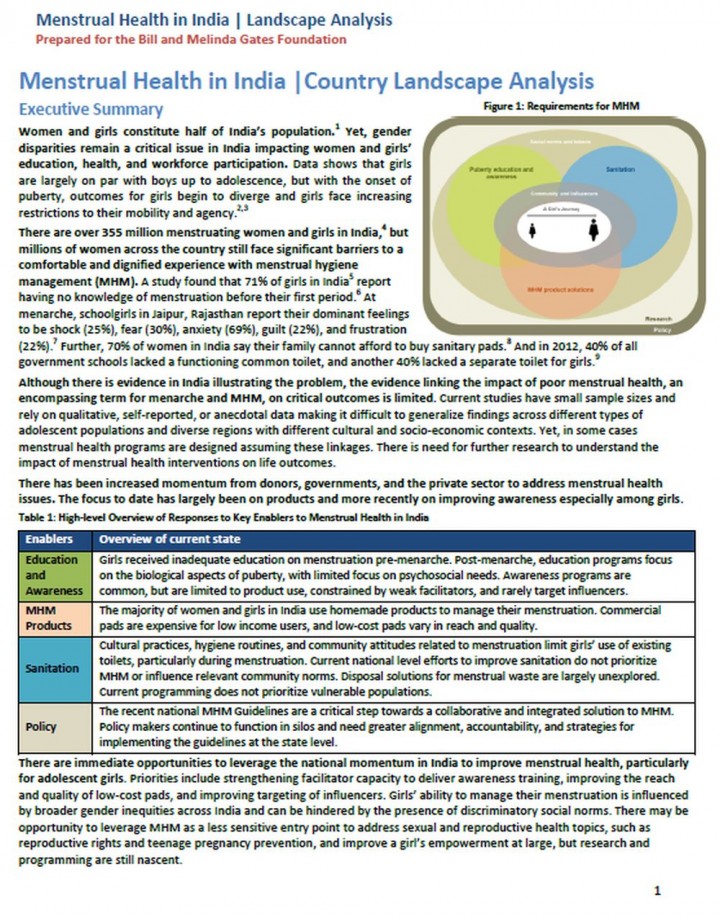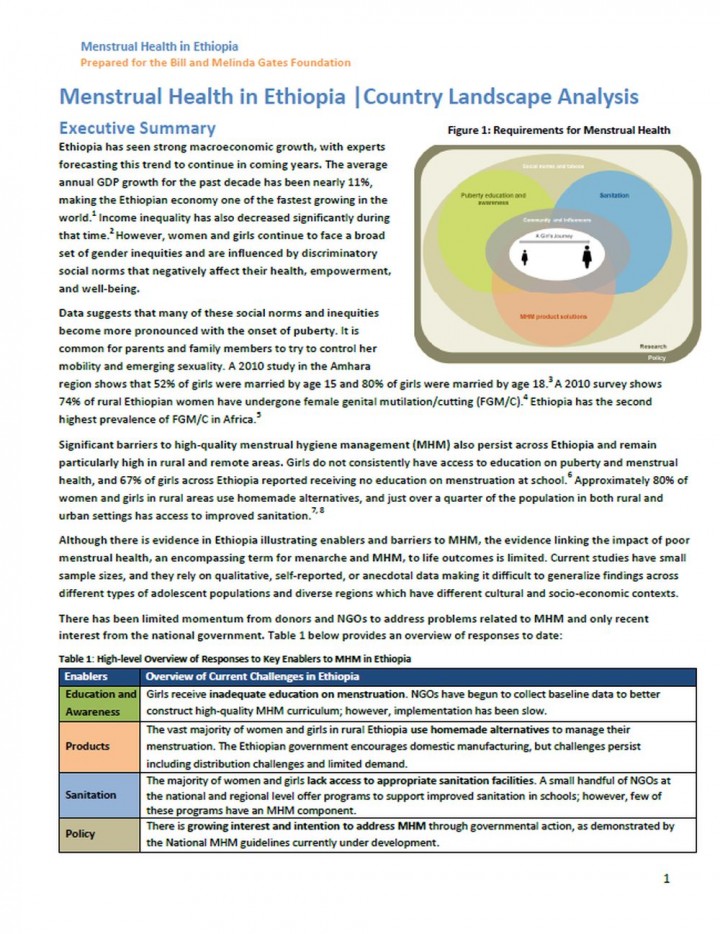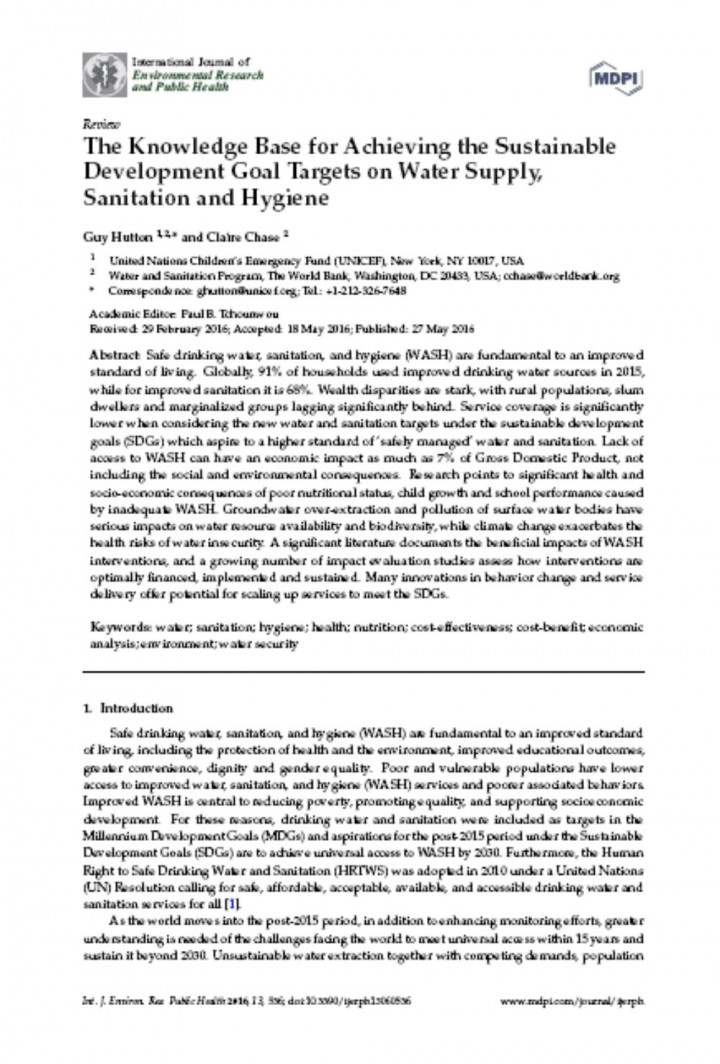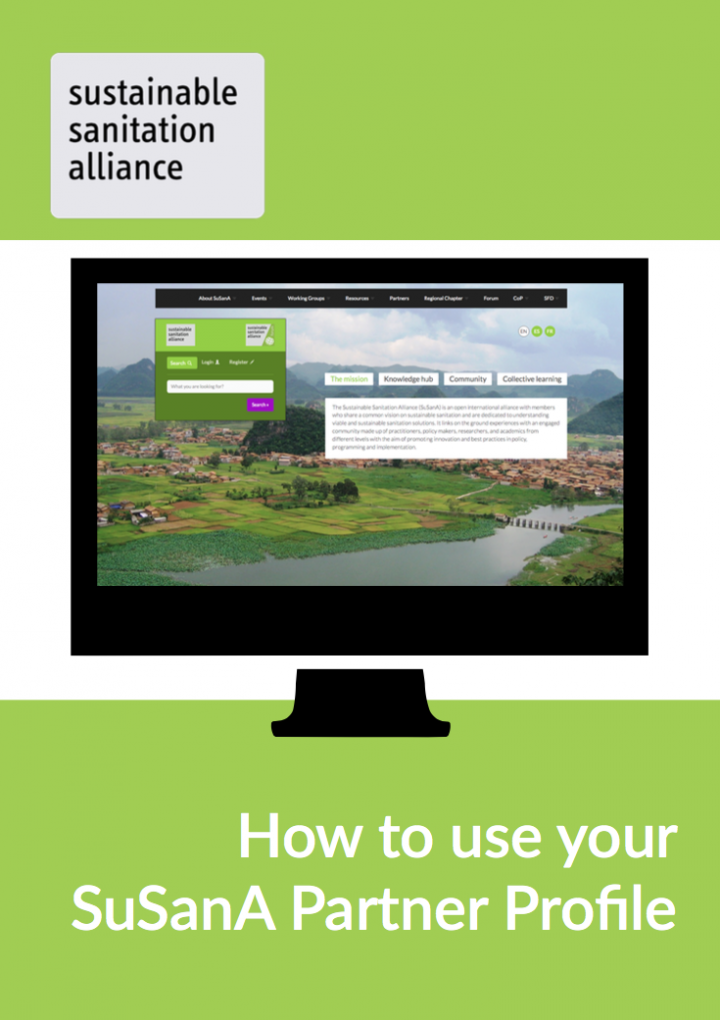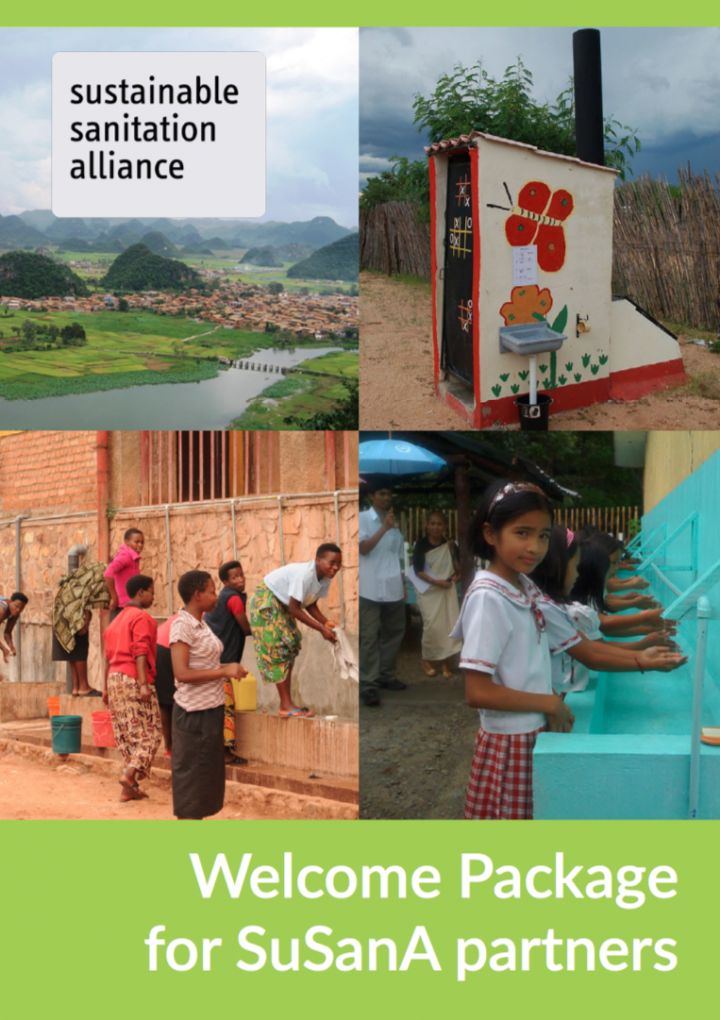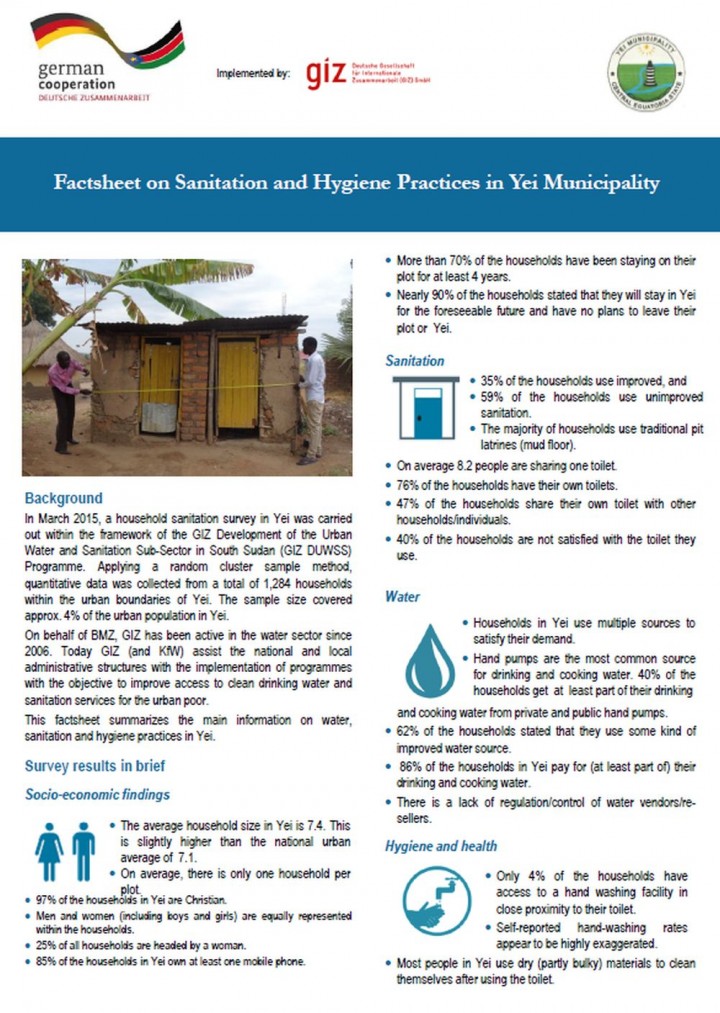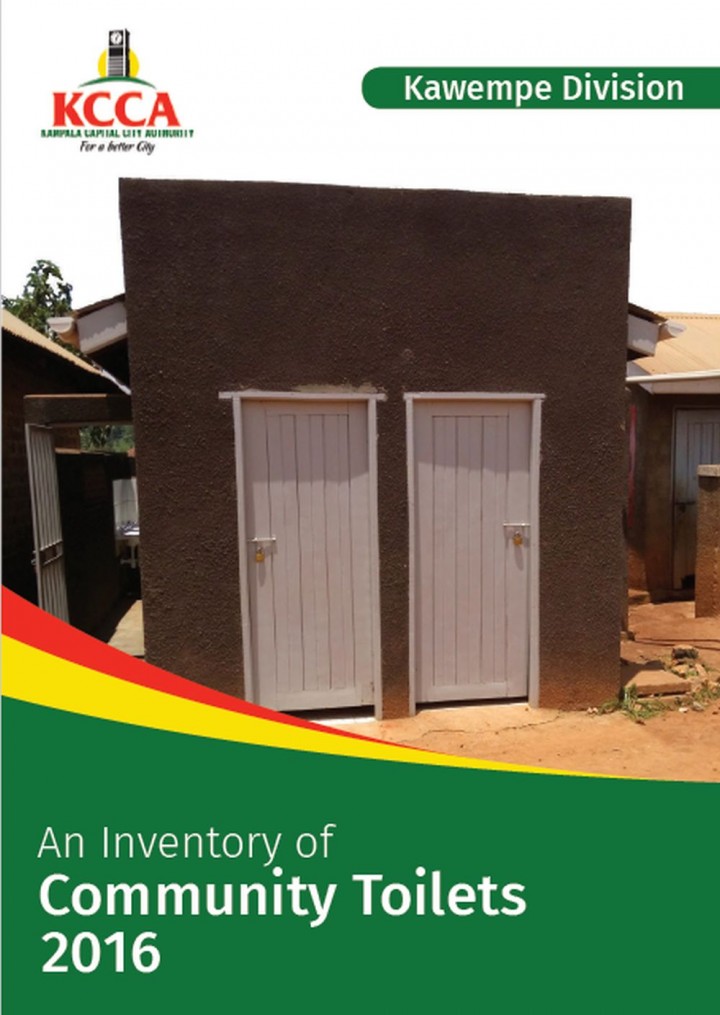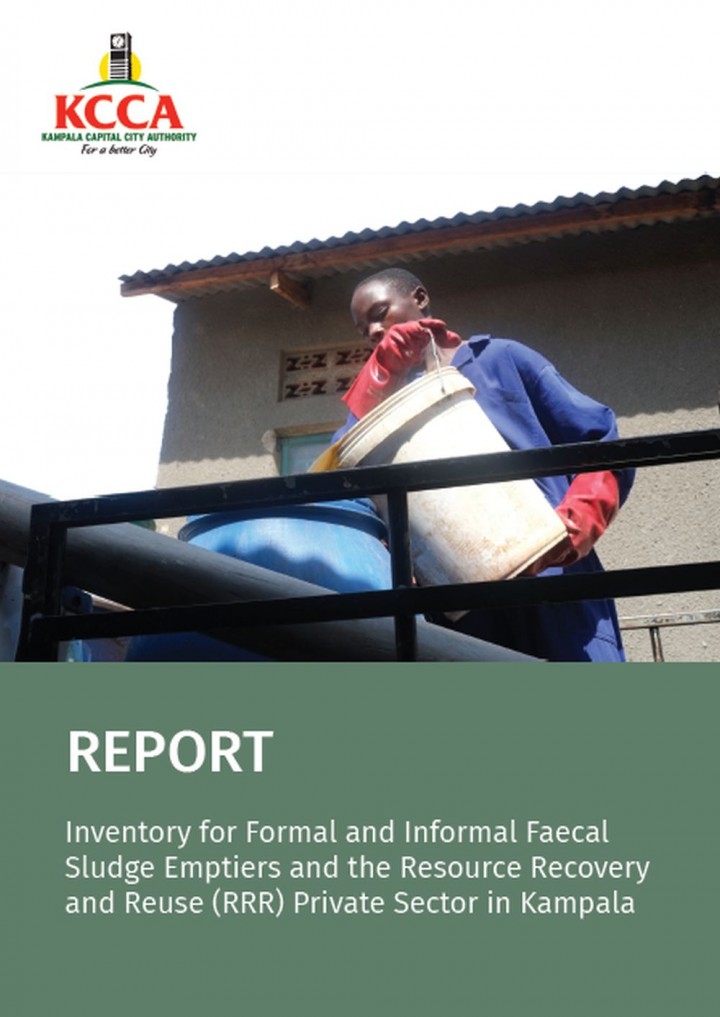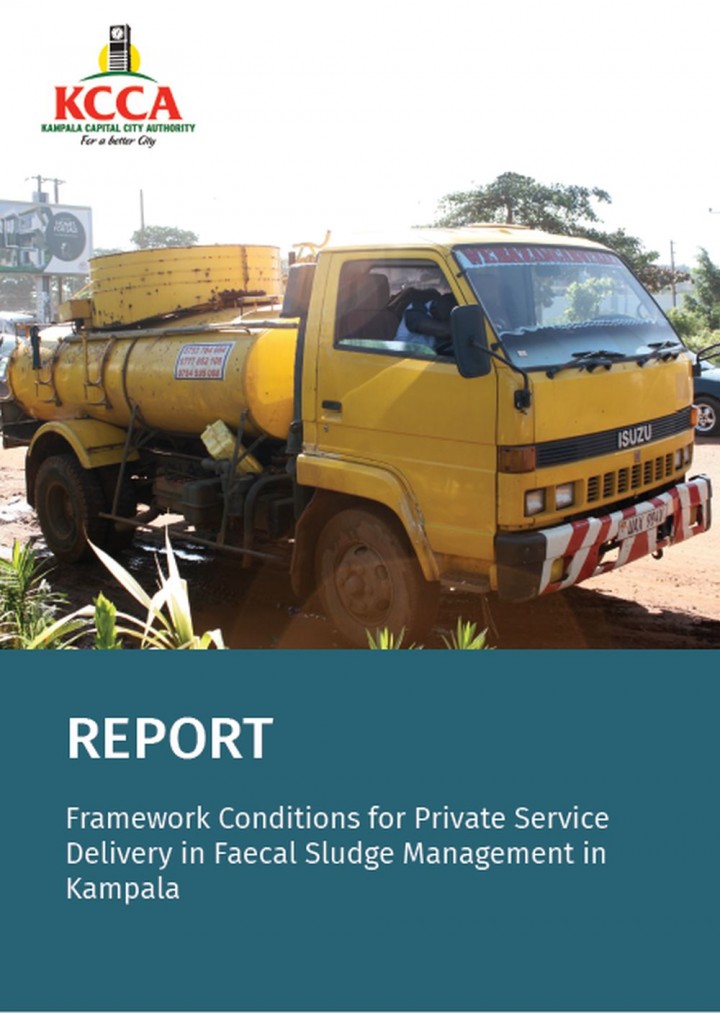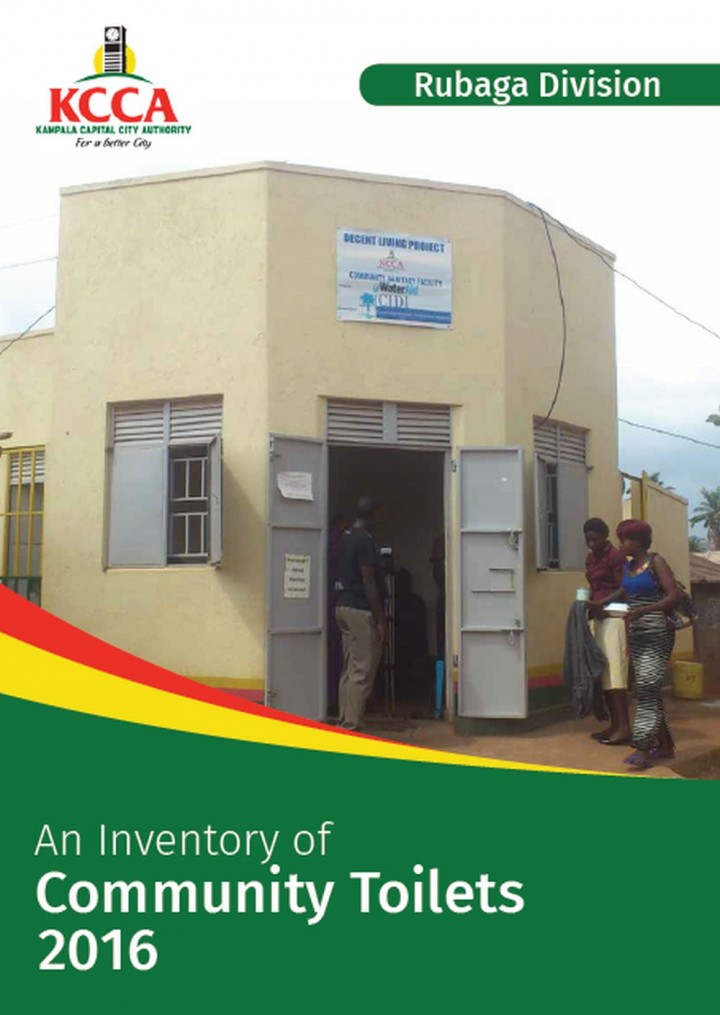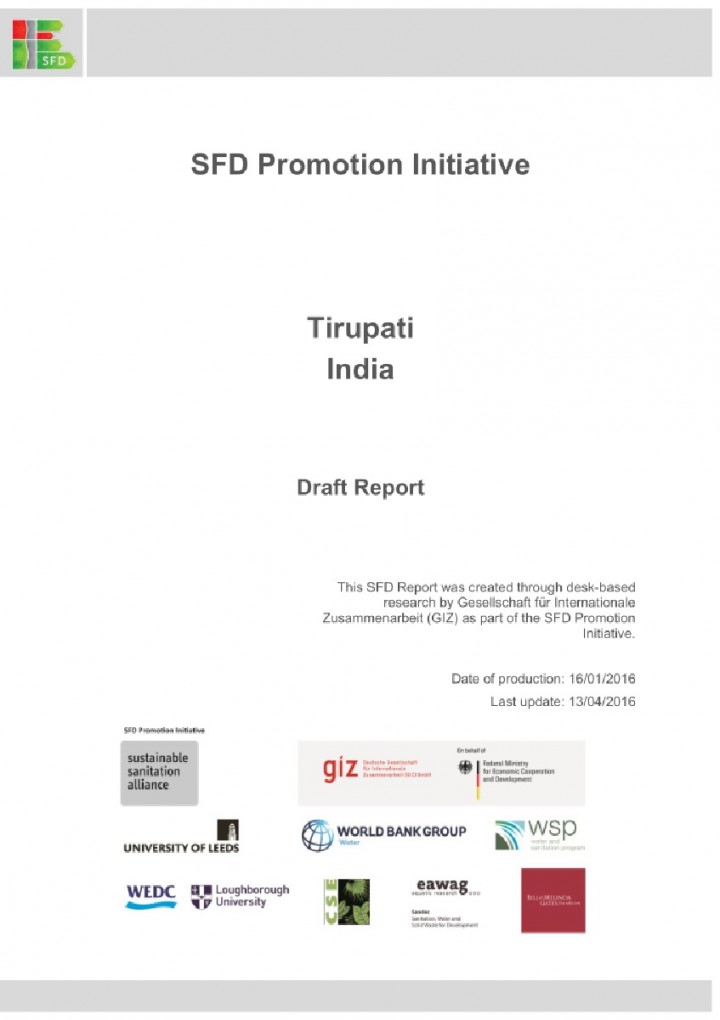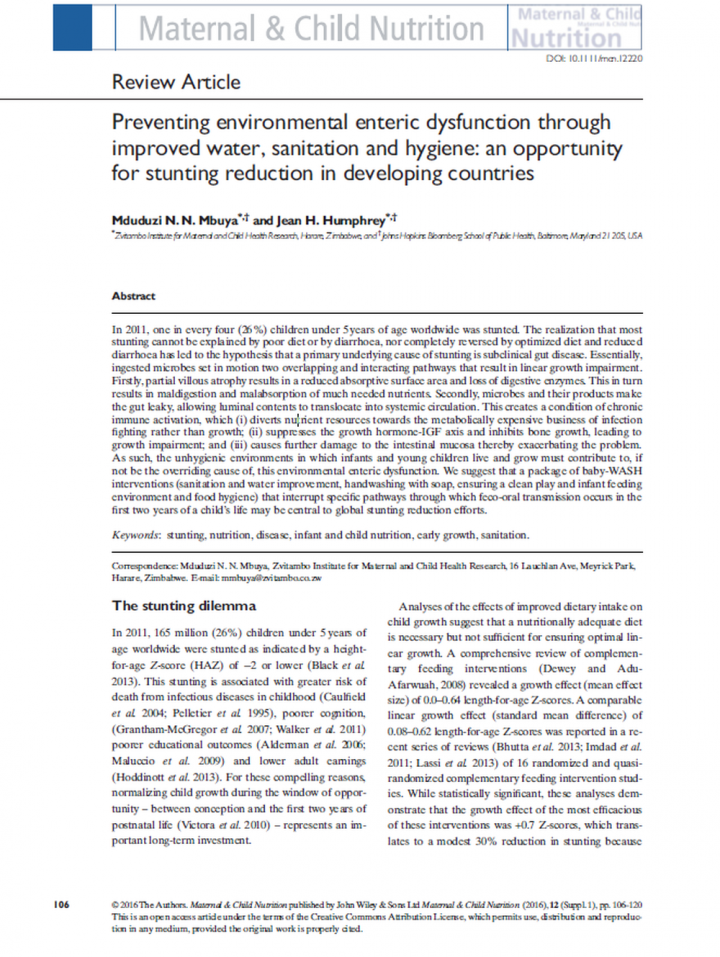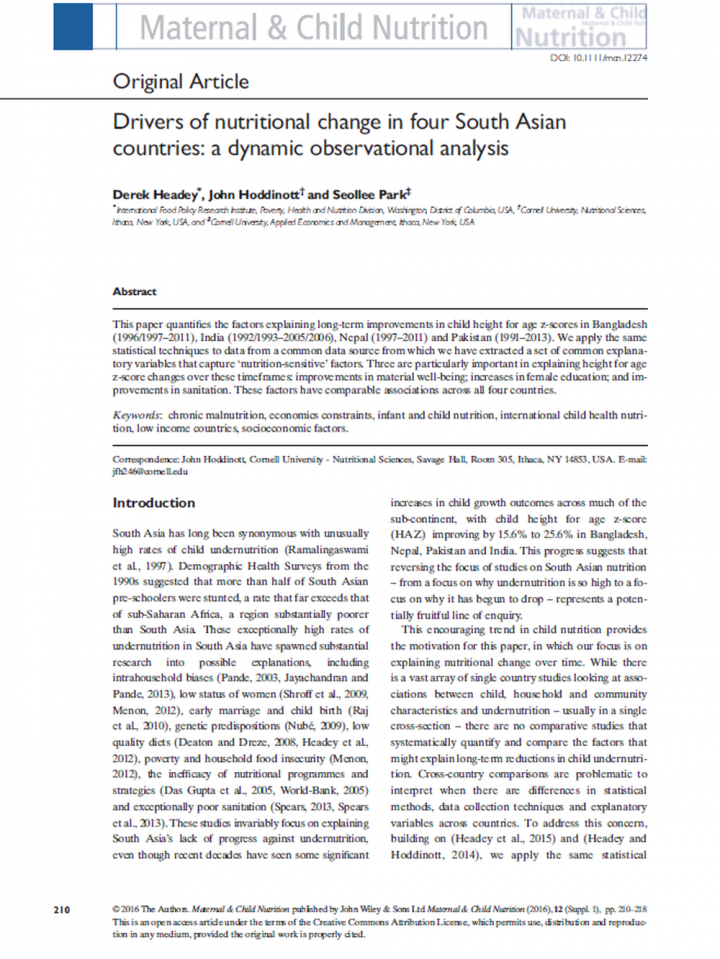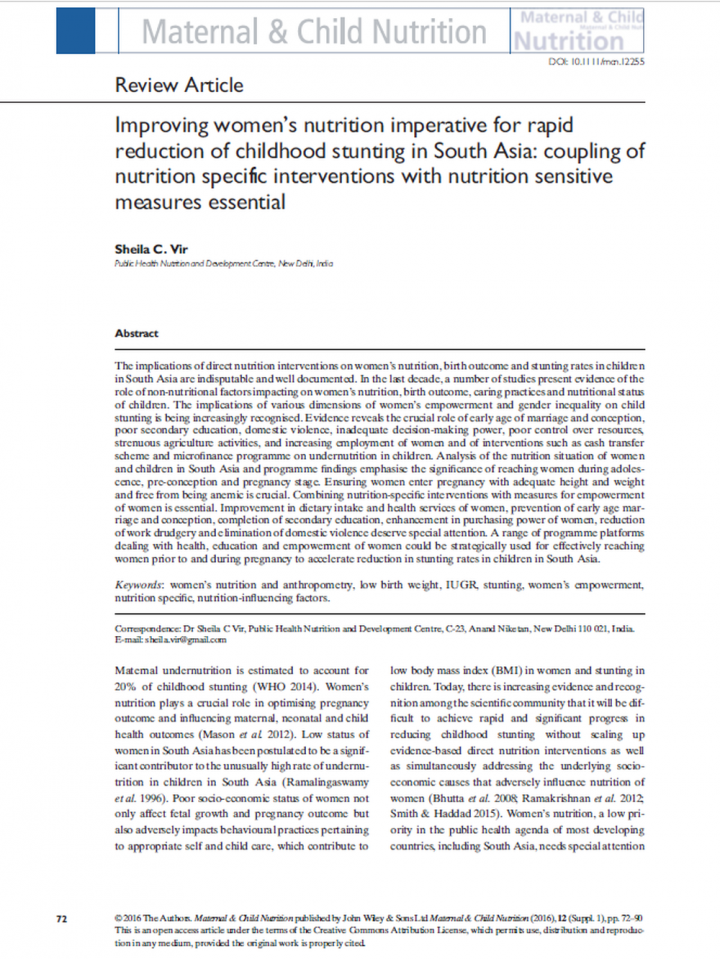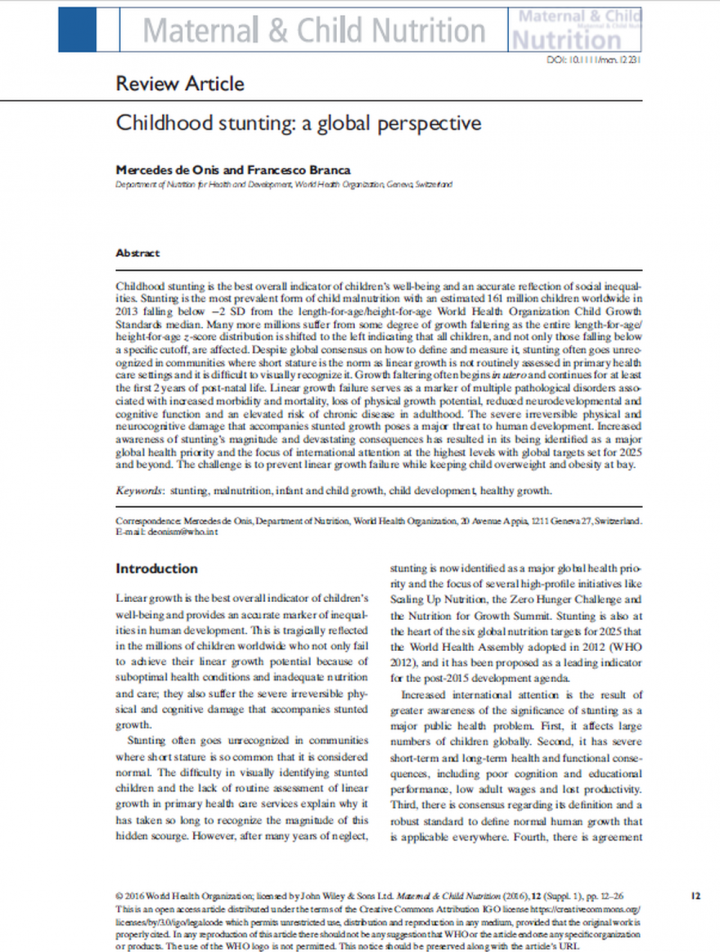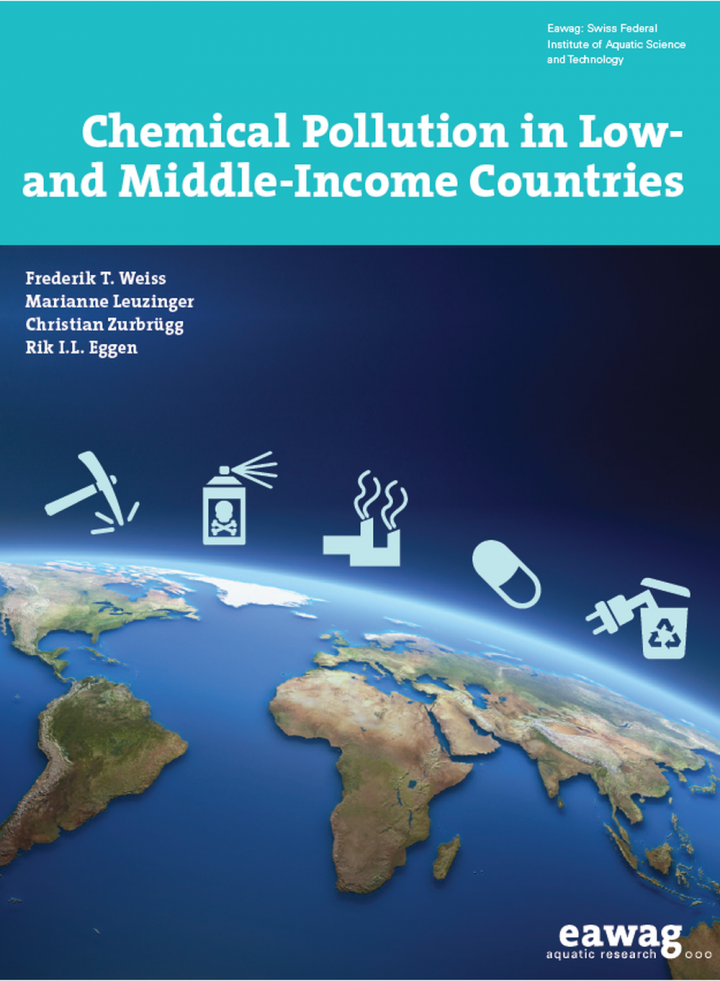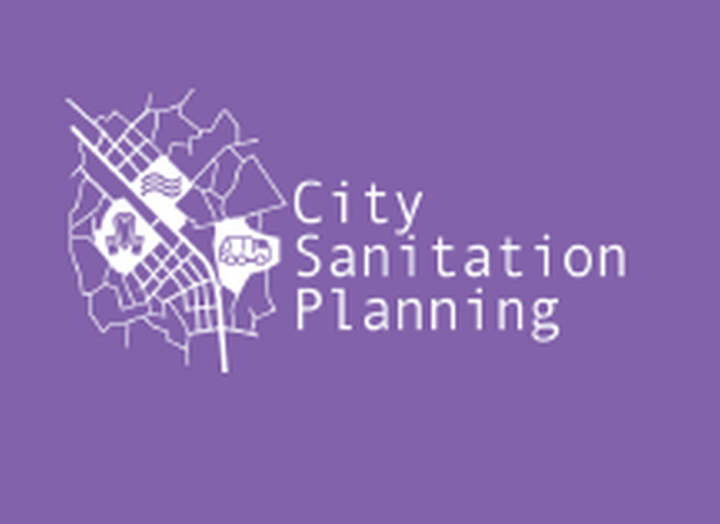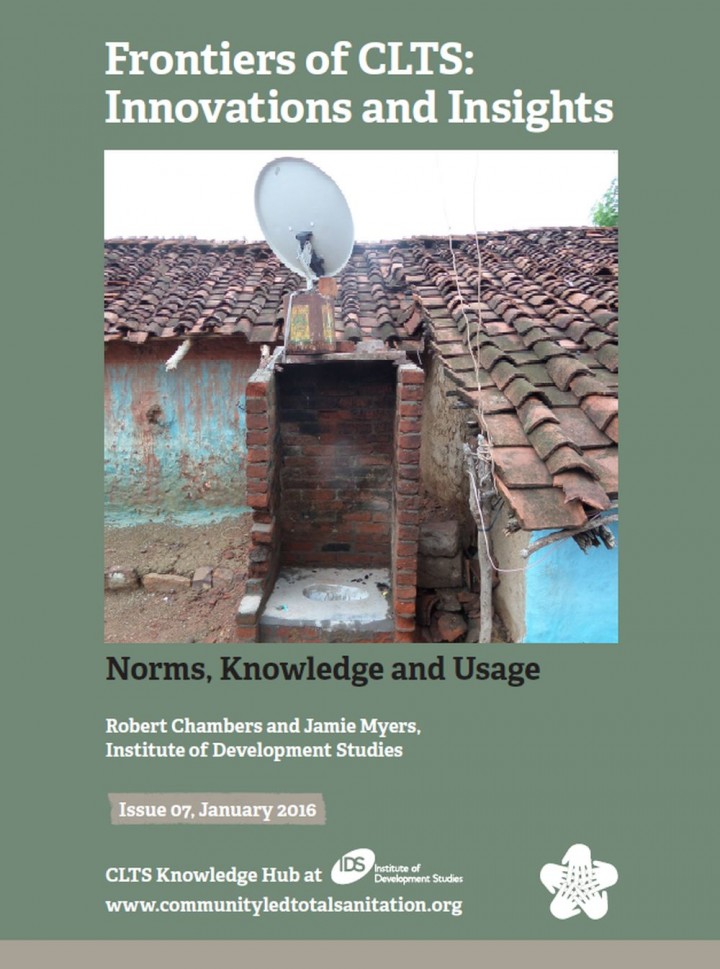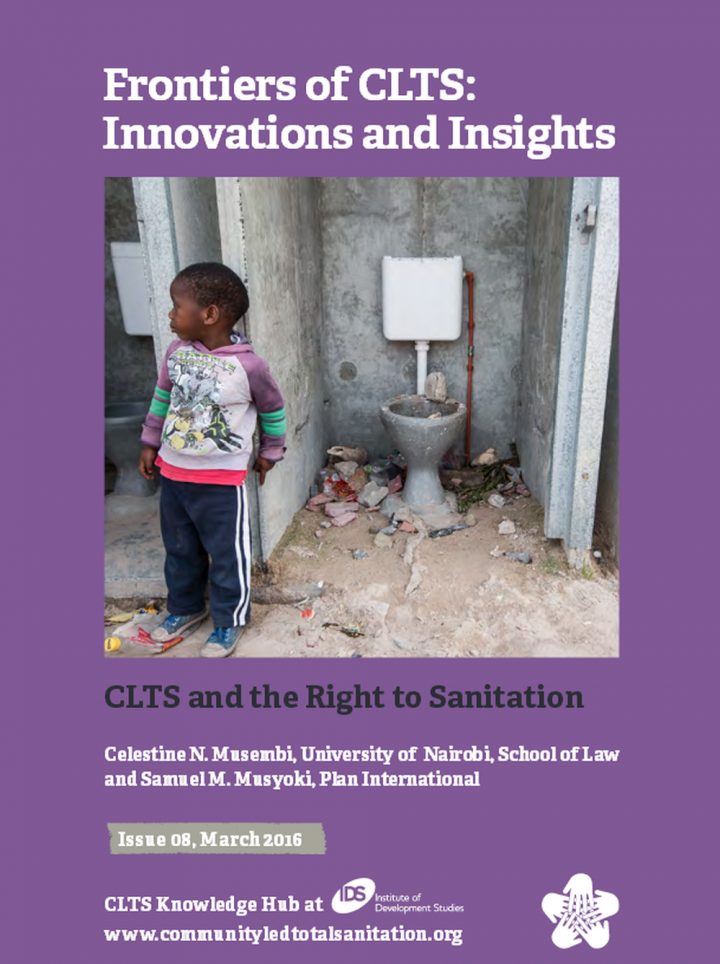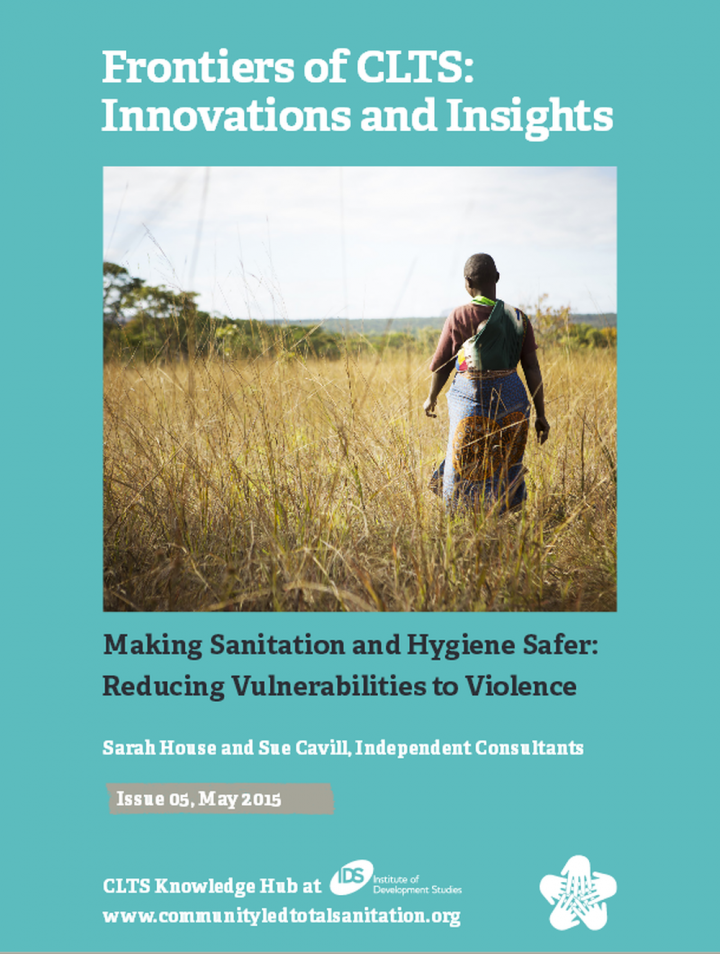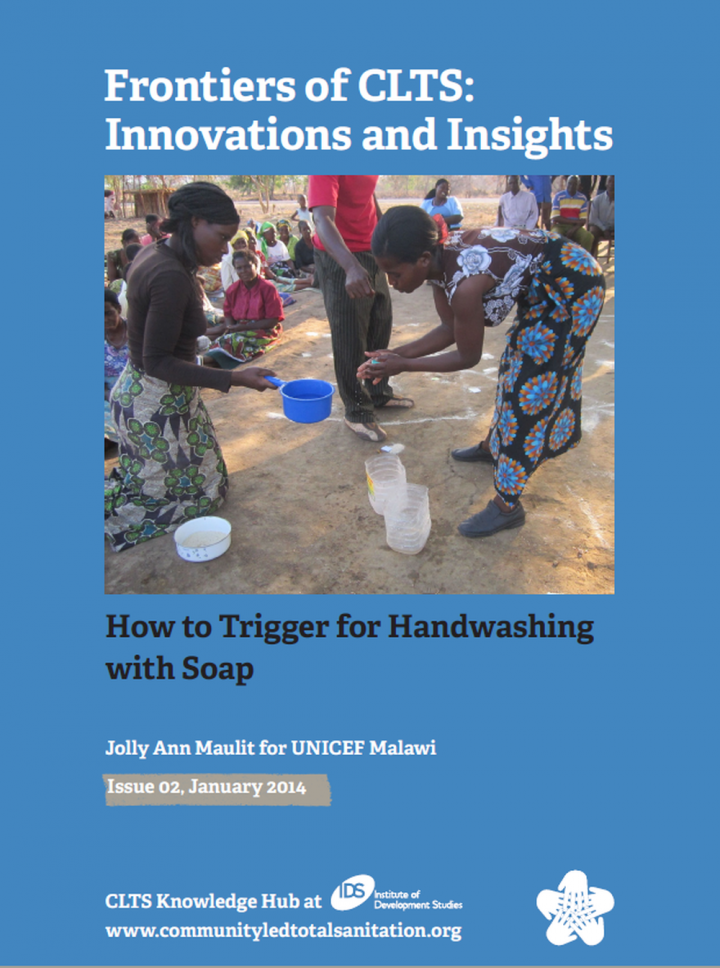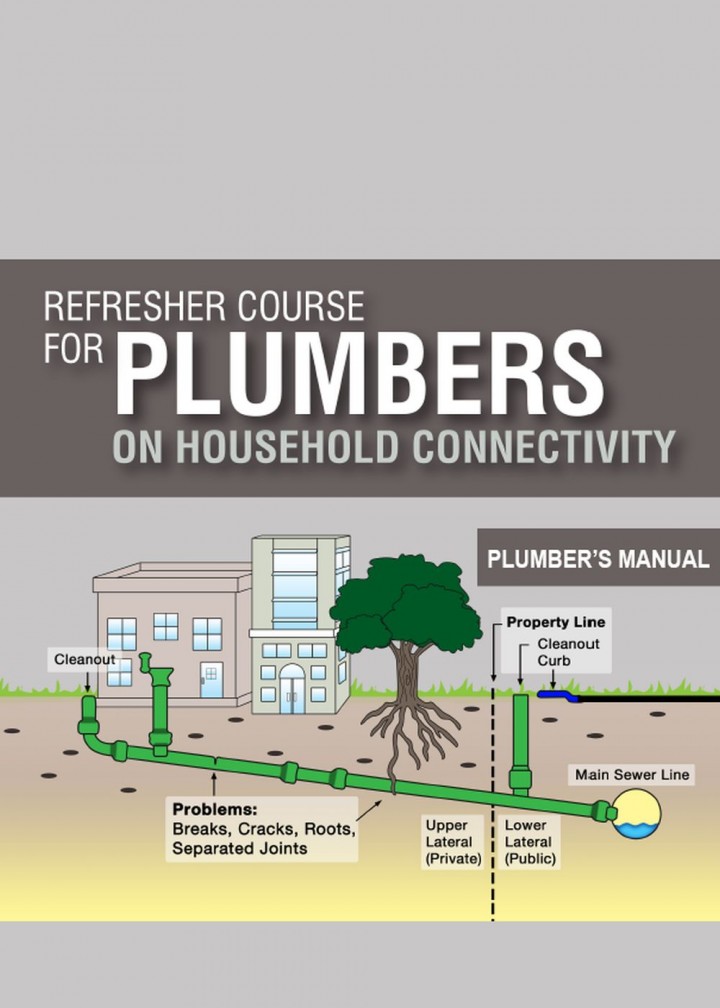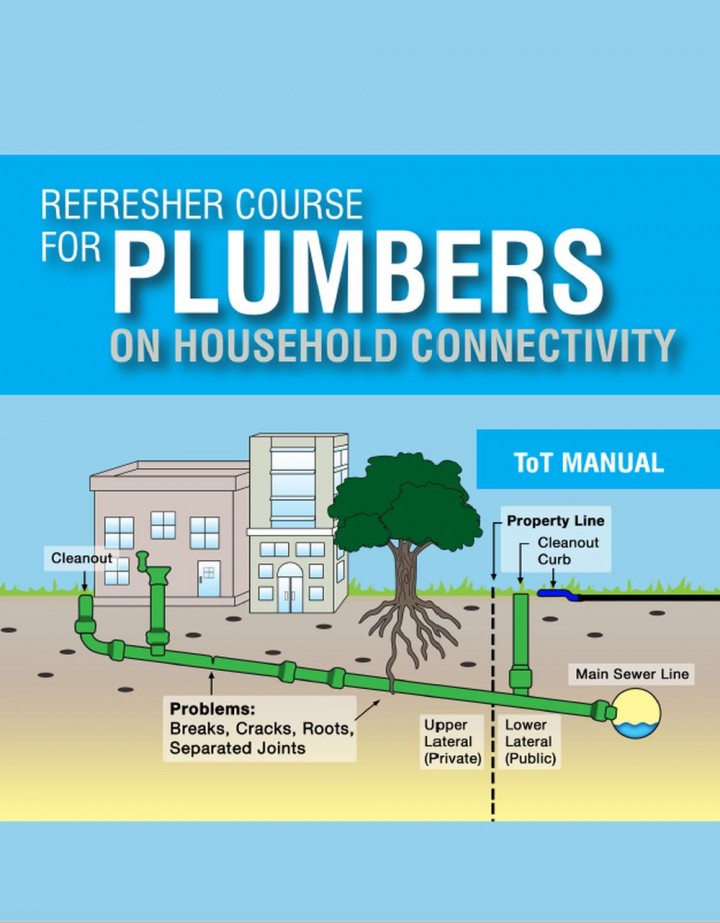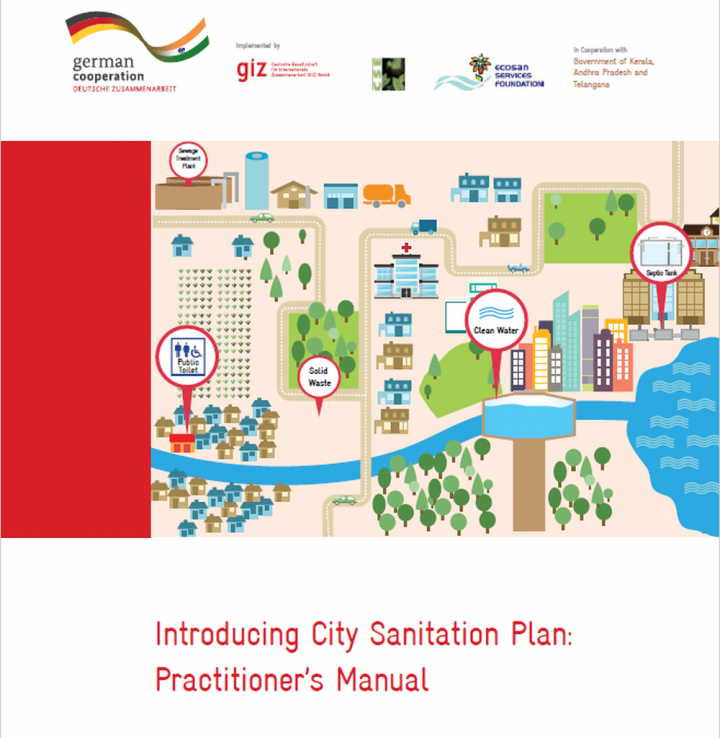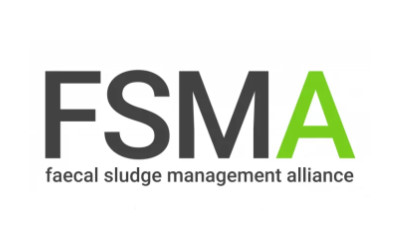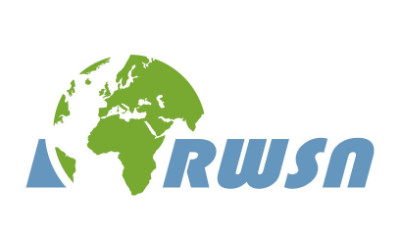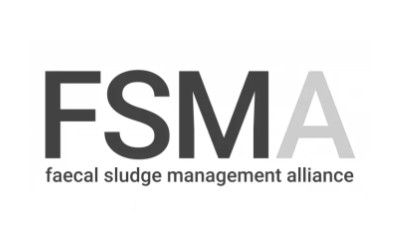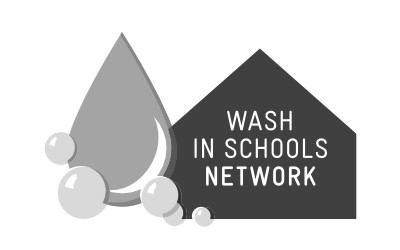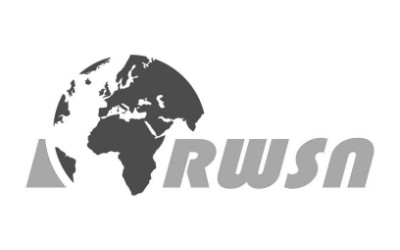Searching for information on Sanitation Workers?
The Sanitation Workers Knowledge + Learning Hub is the best source for all current news, trends, articles and updates on sanitation workers rights around the world.
This report seeks to understand:
(1) the current state of girls’ experience with menarche and MHM in India,
(2) donor, government, NGO, and company responses to girls’ needs, and
(3) opportunities for research, advocacy, and programming to better address these needs.
This complements a Global Landscape Analysis and is one of three Country Landscape Analyses focused on India, Kenya, …
This report seeks to understand:
(1) the current state of girls’ experience with menarche and MHM in Ethiopia,
(2) the donor, government, and NGO responses to girls’ needs, and
(3) opportunities for research, advocacy, and programming to better address these needs.
This complements a Global Landscape Analysis and is one of three Country Landscape Analyses focused on India, Kenya, and …
Safe drinking water, sanitation, and hygiene (WASH) are fundamental to an improved standard of living. Globally, 91% of households used improved drinking water sources in 2015, while for improved sanitation it is 68%. Wealth disparities are stark, with rural populations, slum dwellers and marginalized groups lagging significantly behind. Service coverage is significantly lower when considering …
This document will show you everything you need to know about the SuSanA platform and all the resources that it offers including:
- The SuSanA partner profiles,
- Discussion forum
- Working groups
- Social media
- Thematic Discussions
- Hosting of SuSanA events
- Online library
- SuSanA newsmail
In the file download section below you will find:
- The Welcome Package for new …
In March 2015, a household sanitation survey in Yei was carried out within the framework of the GIZ Development of the Urban Water and Sanitation Sub-Sector in South Sudan (GIZ DUWSS) Programme. Applying a random cluster sample method, quantitative data was collected from a total of 1,284 households within the urban boundaries of Yei. The sample size covered approx. 4% of the urban population in …
Kampala city has a population of 1.5 million people with an estimated day population of 3.5 million. On average, two million people move through the city and need to use public/community sanitation facilities.
Section 35 of the KCCA Act 2010 mandates KCCA to provide safe sanitation facilities in communities. While fulfilling this obligation, KCCA and partners have constructed about 560 …
In Kampala, about 90% of the people rely on on-site sanitation solutions, which cannot be considered “improved” or “acceptable” in most cases: too many households share one toilet; pit-latrines are unlined, filled with solid wastes, and hard to access for emptying services, ultimately leading to filled-up facilities that are either abandoned or directly emptied into the environment, …
Sanitation issues are some of the most significant development challenges for Kampala City, Uganda. Like many other capital cities in developing countries, Kampala is experiencing rapid population and economic growth. However, provision of key services including adequate sanitation for the city population has not been in tandem with these developments.
In Uganda, piped sanitation systems are …
Kampala city has a population of 1.5 million people with an estimated day population of 3.5 million. On average, two million people move through the city and need to use public/community sanitation facilities.
Section 35 of the KCCA Act 2010 mandates KCCA to provide safe sanitation facilities in communities. While fulfilling this obligation, KCCA and partners have constructed about 560 …
Tirupati is situated in Chittoor district in the southern of the state of Andhra Pradesh with a total population of just under 375,000. The town is a pilgrimage center and attracts a total diurnal floating population of about 55,000. During religious festivals the diurnal floating population exceeds 100,000. In Tirupati it was estimated that 70% of excreta is managed safely while 30% of the …
In 2011, one in every four (26%) children under 5 years of age worldwide was stunted. The realization that most stunting cannot be explained by poor diet or by diarrhoea, nor completely reversed by optimized diet and reduced diarrhoea has led to the hypothesis that a primary underlying cause of stunting is subclinical gut disease. Essentially, ingested microbes set in motion two overlapping and …
This paper quantifies the factors explaining long-term improvements in child height for age z-scores in Bangladesh (1996/1997–2011), India (1992/1993–2005/2006), Nepal (1997–2011) and Pakistan (1991–2013). We apply the same statistical techniques to data from a common data source from which we have extracted a set of common explanatory variables that capture ‘nutrition-sensitive’ …
The implications of direct nutrition interventions on women’s nutrition, birth outcome and stunting rates in children in SouthAsia are indisputable and well documented. In the last decade, a number of studies present evidence of the role of non-nutritional factors impacting on women’s nutrition, birth outcome, caring practices and nutritional status of children. The implications of various …
Childhood stunting is the best overall indicator of children’s well-being and an accurate reflection of social inequalities. Stunting is the most prevalent form of child malnutrition with an estimated 161 million children worldwide in 2013 falling below 2 SD from the length-for-age/height-for-age World Health Organization Child Growth Standards median. Many more millions suffer from some degree …
This report draws attention to the neglected issue of anthropogenic chemical pollution in low- and middle-income countries.
The daily use of chemicals is omnipresent and only a few industrial sectors do not use chemical products. Consideration of chemical pollution issues are mainstream in the developed world where policy and practice engage in finding and implementing appropriate solutions. …
This City Sanitation Planning (CSP) package approach for Dar es Salaam was created in response to the need for a simple, fast and flexible tool for determining “which sanitation solutions go where”. CSP has the following advantages:
• Can keep up with rapid urban growth and is fast to update as new data (e.g. satellite imagery, open-street maps, etc.) becomes available
• Broad and …
The partial or total non-use of toilets, with some or all in a household defecating in the open, is a growing concern. Although all households may have a toilet, communities cannot remain open defecation free unless they are always used by everyone. This is not just an issue of maintenance and accessibility but also of social norms, mind-sets, and cultural preferences. The problem is widespread …
Lack of sanitation impacts on the rights to life and health, the right to education (through loss in school days, particularly for girls) and the right to dignity (UNRIC nd). The purpose of this issue of Frontiers of CLTS is to examine
Community-Led Total Sanitation (CLTS) in light of human rights: Does CLTS contribute to realising the right to sanitation and other inter-related rights? Are the …
Most adolescent girls and women menstruate. This means that for five to seven days each month they bleed through their vagina. This monthly bleeding is often accompanied by abdominal cramps, headaches, mood changes and general lethargy all of which can be exacerbated by social stigma, myths and a lack of requisite infrastructure to manage menstruation safely, privately and hygienically. The …
This issue of Frontiers of CLTS brings together lessons on violence related to sanitation and hygiene and examples of good practice from a range of contexts including urban and humanitarian as well as rural. It interprets these lessons to propose good practice for CLTS practitioners in how they can contribute to reducing vulnerabilities to violence through the ways they work.
The Open Defecation Free (ODF) Malawi 2015 Strategy and National Hand Washing Campaign have been contributing to an increased focus on handwashing with soap (HWWS) in Malawi.1 This is a very positive development!
Some studies estimate that washing hands with soap can reduce diarrhoeal disease rates by up to 50 per cent and respiratory disease rates by up to 25 per cent. This makes handwashing …
The mission of this programme is to educate plumbers on connections between Household and Public Sewerage Systems. This Training of Trainers manual is meant for trainers, in order to equip them with the skills to become expert trainers in this field. This manual is meant to be used in conjunction with the Plumber’s Training Manual and the Recommended Presentations (PPTs) to execute a successful …
“Introducing City Sanitation Plan: A Practitioners Manual” is a culmination of the long drawn process in introducing the importance of CSP for city development. It aims - to sensitize practitioners (key ULB level officials, decision makers, city engineers etc.) to the importance and significance of the CSP as a planning and guidance tool; to support them in understanding key concepts of the …

